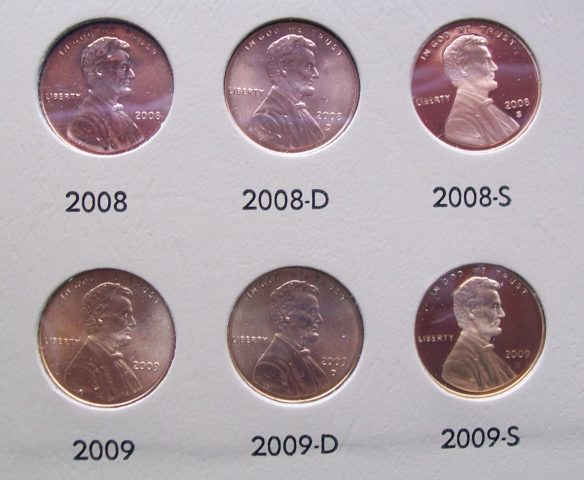
But what is a business strike coin, and how does a business strike coin differ from other types of coins — such as proof coins?
Business strike coins are intended for the purpose of circulating in the channels of commerce — in the daily exchanges of money at grocery stores, banks, malls, etc..
So, the coins you have in your pocket change are examples of business strike coinage.
How A Business Strike Coin Is Made
- Business strike coins are stamped from long sheets of metal that come in rolls.
- The little round blanks that are stamped out from the sheets of metal are annealed (heated, to soften the metal) — so they are easier to stamp.
- Then they get washed and dried.
- The blank coin rounds are then run through an upsetting mill — which raises a rim around the edge of the coins.
- After the coin blank has been annealed, washed, and upset (a process where the edges are pre-formed).
- The coin blank is then struck by a coin die. The striking of the design on a coin occurs in a mere fraction of a second — and simultaneously impresses an image on both the obverse (heads side) and reverse (tails side).
- Next, newly minted coins are visually inspected by mint officials — who use magnifying glasses to spot-check entire batches of coins.
- Then, the coins are counted, bagged, and sent to the Federal Reserve Banks.
- From there, the coins will be distributed to banks, credit unions, stores, and other outlets.
Here is the U.S. Mint’s detailed explanation of how a coin is made.
What Are Business Strike Coins Made From?
The answer to this question depends on the coin.
- In the early 1960s, the standard metal composition for dimes, quarters, and half dollars was 90% silver, 10% copper.
- By 1971, the U.S. Mint changed the metal composition for all dimes, quarters, and half dollars to 75% copper and 25% nickel. This copper-nickel clad composition is what business strike dimes, quarters, and half dollars are made from today.
One-cent coins have also had various metal composition standards over the years:
- Until 1982, pennies were mostly copper – in fact, they were about 95% copper through the early 1980s.
- After 1982, in an effort to lower minting costs, the U.S. Mint used a cheaper metal composition consisting almost entirely of zinc. Each zinc cent has a very thin layer of copper so the newer one-cent coins look similar to their earlier, copper-dominant counterpart.
What Are Non Business Strike Coins Made From?
Coins that aren’t business strike can include proof coins, as well as other types of special issue coins.
These special issue coins may be made from either an alternative, pricier metal — or they’re simply the regular metallic composition.
Proofs are sometimes struck in both the regular-issue metal and special-issue composition. An example of this includes proof Washington quarters — which are struck in regular copper-nickel clad and special 90% silver composition.
However, not all non-business strike coins are proof coins.
- Some non-proof coins are struck with a special finish.
- Coins packaged in U.S. Mint sets from 2000 through 2010 have a satin finish.
- In 2011, these coins began featuring a brilliant finish.
Coins in most U.S. Mint uncirculated sets from before 2000 are considered business strikes.
Another example of a non-proof special issue coin can be traced back to 1997 — when 25,000 Jefferson nickels were struck in a satin finish and included as part of that year’s Botanical Gardens commemorative silver dollar set.




